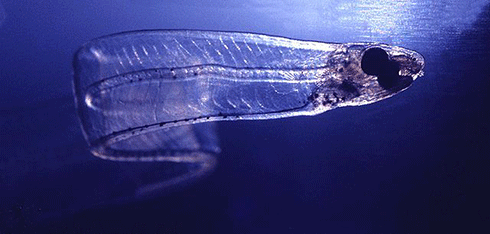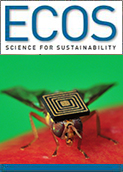
|
Published: 17 March 2014
Ocean food web is key in the global carbon cycle
In a study of the ocean's role in the global carbon cycle, US researchers incorporated the lifecycle of phytoplankton and zooplankton at the bottom of the marine food chain into a model for assessing global ocean carbon export.
Their findings appear online in the journal Global Biogeochemical Cycles.
The researchers, led by David Siegel from the University of California Santa Barbara, used satellite observations including determinations of net primary production (NPP) – the net production of organic matter from aqueous carbon dioxide (CO2) by phytoplankton – to drive their food-web-based model.
They focused on the ocean's biological pump, which exports organic carbon from the euphotic zone – the well-lit, upper ocean – through sinking particulate matter, largely from zooplankton faeces and aggregates of algae. Once these leave the euphotic zone, sinking into the ocean depths, the carbon can be sequestered for a season or for centuries.
Carbon is present in the atmosphere and is stored in soils, oceans and the Earth's crust. Any movement of carbon between – or in the case of the ocean, within – these reservoirs is called a flux.
According to the researchers, oceans are a central component in the global carbon cycle through their storage, transport and transformations of carbon constituents.
‘Quantifying this carbon flux is critical for predicting the atmosphere's response to changing climates,’ Siegel said.
‘By analysing the scattering signals that we got from satellite measurements of the ocean's colour, we were able to develop techniques to calculate how much of the biomass occurs in very large or very small particles.’
Their results predict a mean global carbon export flux of 6 petagrams (Pg) per year. Also known as a gigaton, a petagram is equal to one quadrillion (1015) grams. This is a huge amount, roughly equivalent to the annual global emissions of fossil fuel. At present, fossil fuel combustion represents a flux to the atmosphere of approximately 9 Pg per year.
The researchers are taking their model one step further by planning a major field program designed to better understand the states in which the biological pump operates.
‘Understanding the biological pump is critical,’ Siegel concluded. ‘We need to understand where carbon goes, how much of it goes into the organic matter, how that affects the air-sea exchanges of CO2 and what happens to fossil fuel we have emitted from our tailpipes.’
Source: EurekAlert!




